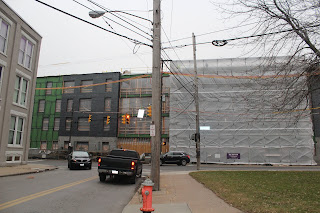Yesterday, Cleveland State University (CSU) hired a new employee that will probably be a game changer for Cleveland and Northeast Ohio. It could ultimately lead to thousands of new jobs. Yes, thousands.
And, weeks ago, Canon Medical Research USA Inc. posted a job listing for a new position at its Cleveland-area offices -- director, magnetic resonance imaging (MRI) research and development (R&D). It could also lead to thousands of new jobs in the future.
First, let's delve into the more immediate news that CSU has hired Forrest Faison III, former U.S. Navy Vice Admiral and served as the 38th Surgeon General of the Navy and chief of the Bureau of Medicine and Surgery from 2015 to 2019.
He was named senior vice president for research & innovation/chief healthcare strategy officer at CSU. According to a CSU press release, he will oversee the broad effort to unify and expand the university's educational, outreach and scholarship efforts in all aspects of health care, while spurring the continued growth of Cleveland as a center for medical innovation.
Consider that there is only one publicly funded medical school in Northeast Ohio -- the Northeast Ohio Medical University (NEOMED) way out in Rootstown, between Akron and Youngstown.
CSU recently partnered with NEOMED to create the NEOMED-CSU Partnership for Urban Health, which has its physical presence in the 2015-built Center for Innovations in Medical Professions Building at the southwest corner of Euclid Avenue and East 22nd Street.
 |
| With the hiring of Forrest Faison, CSU is launching a bold and ambitious effort to position itself as one of the nation's notable medical and health care research centers (Google). |
Yes, Case Western Reserve University (CWRU) has a medical school but it's not a publicly funded school. Its tuition is beyond the reach of some potential applicants who end up in state schools in other cities.
While Cleveland Clinic gets medical students and interns through CWRU, University Hospitals Health System (UHHS) and the MetroHealth System have to import most of their medical students from outside the region.
That's part of what Faison will seek to address. He will develop new pathways and strategies designed to enhance the university’s status as a nationally recognized urban research university. Faison's national and even global stature immediately puts CSU on the medical education map.
Some potential outcomes?
Look for significant new medical school and research buildings constructed on CSU's downtown Cleveland campus in the coming years, said a source closely connected to this effort, but who was not authorized to speak publicly yet on it.
The new medical school and research facilities will likely feature thousands of students and research jobs and be a magnet for many millions of dollars of state and federal funding for education and research.
Not only will CSU's effort provide a steady and voluminous supply of students and interns for UHHS and MetroHealth, but it will likely strengthen the region's already robust healthcare research scene, the source said.
"Welcome to Cleveland, Forrest," said Akram Boutros, president and CEO of MetroHealth on Twitter. "All of us at MetroHealth look forward to working with you and your team at CSU."
Simultaneously yet independently, Canon Medical Research USA's desired hiring of a director of MRI R&D could also have significant future ramifications for Greater Cleveland's economy. First, let's consider where Canon is coming from.
Canon, long known for cameras and copiers, has wanted to expand its presence in the medical imaging business in a big way. So in 2016 they acquired industry giant Toshiba Medical Systems for $6 billion. Underneath Canon Medical System's big umbrella is tiny Canon Medical Research USA, based in Greater Los Angeles.
And last fall, Canon acquired Quality Electrodynamics LLC (QED) of Mayfield Village. Canon has designated its medical business as a new business that will expand and drive future growth for the company. The acquisition of QED furthers this strategy.
“This new relationship is a tremendous opportunity for QED and its 175 associates to continue to add new customers and products and will further drive QED’s growth and employment levels in northeast Ohio,” said QED Board member Albert B. Ratner in a written statement.
Canon's goal is to develop its research arm so that it isn't tiny anymore. Indeed, they want it to be a giant in medical imaging and an expanded R&D program will get them there. Interestingly, between Canon Medical Research USA's two principal R&D locations -- Chicagoland and Greater Cleveland -- the site where this director of R&D will be based is in Greater Cleveland.
That's a great sign for the potential expansion of this significant R&D activity. And, when combined with CSU's commitment to medical education and research, as well as CWRU's and Cleveland Clinic's established medical research capabilities, it's a sign that Greater Cleveland is on a path to strengthen its global position in this growing field.
END

























